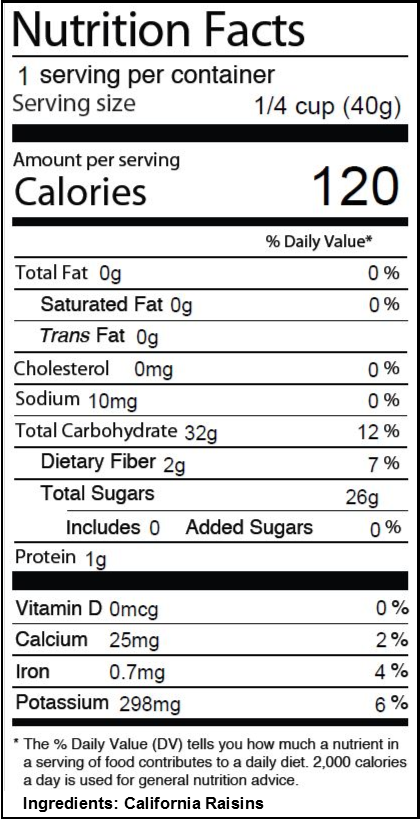We are blessed with the ability to bypass marketing genius to get to the heart of what is truly in the food we put in our mouths. Our angel in disguise is the small nutritional label on the back (usually) of packaged foods. Unfortunately, unpackaged foods such as one ingredient foods or ones sold in their natural form, don’t have nutritional information, like meat, vegetables or fruit.
Order of importance
Nutritional labels are required to list ingredients in order of quantity. In other words, the first couple of ingredients have the largest proportion in the food. If you see that sugar, high fructose corn syrup, vegetable oils or some unrecognizable chemical name is in one of the first spots, run, from this food product!
Keep it simple
Prioritize food products with shorter lists and simple names. If you can’t pronounce or don’t know an ingredient, try to find a product that has simple ingredients that aren’t chemicals. If you buy dried fruit, pick a package that just has the fruit and no other preservatives or sugar added (when possible).
Whole, please
Look for whole ingredients, “whole wheat” is a whole grain. “Wheat” is not. Even if it’s unbleached or fortified. The same applies to any other grain.
No added sugar
Ideally, look for products that don’t have any form of sugars added to them (dextrose, fructose, glucose, lactose, sucrose, anything ending in “ose”, etc) in the ingredient list or in the added sugars column. As a point of reference, sugar has 4g of sugar in a teaspoon.
Serving sizes are key
ALWAYS look at the serving size. You may tend to eat a bowl of cereal and assume the nutritional facts are based on this size that most people eat but realize this is not always the case. If you can’t understand the serving amount then ask Google to translate into a unit that is understandable to you. Also, try not to go way over serving sizes as they tend to be a good gauge of a standard portion of something.
Calories Matter
Like anything in life, try to get the most bang for your buck. If you don’t know what’s a normal amount of calories for something, compare it to the other same products, think how much you would normally eat, and compare it against what the RDA deems a normal calorie allowance per day for someone who is not trying to lose weight, 2000 calories.
Not too much fat, not too little fat
Look at the total fat. Hopefully, there’s not a lot of saturated fat and no trans fat. Many of the medical bodies suggest keeping saturated fat below 10% of your daily value. As a point of reference, a tablespoon of oil has around 14 g of fat so you want to try and stay below that number for a serving size. A small amount of fat (say 2-5 g) helps keep you satiated. Too much fat can promote weight gain. If you are doing a low carb diet, though fat is an inherent component of the diet, you still need to be mindful of added fats that are not an inherent part of a whole food (for instance, a chicken thigh in its integrity).
Fiber, please
Fiber helps your body absorb vital nutrients from food, helps it pass through the digestive system so you have easier bowel movements, and because it is absorbed slower increases your satisfaction from food and keeps your blood glucose levels from rising too fast. Whole foods tend to be higher in fiber. To give you a point of comparison, an apple has around 4.4 g of fiber. The American Heart Association recommends that you have about 25 g per day.
Carbohydrates should be balanced
Some foods will have a whopping number of carbohydrates, without protein or fiber. Try to keep a certain balance between your macronutrients so that your carbohydrates are 1 or 1.5 times your protein. For reference, a whole grain piece of bread has about 15 carbohydrates.
Protein builds muscles
Protein is important for body cellular processes. It is used to build and repair tissues, make enzymes, hormones, bones, muscles, blood and more. The presence of protein in our meals helps keep us satisfied longer and helps moderate blood sugar spikes. The DRI (Dietary Reference Intake) is 0.8 grams of protein per kilogram of body weight or 0.36 grams per pound. This amounts to 56 grams per day for the average sedentary man.
Daily Value if you don’t remember anything said here
Remember the nutritional facts label has a very clever way to help out us laypeople. The daily value percentages to the right of a label allow you to see how the amount of the particular nutrient in question compares to the daily value of a 2000 calorie diet. So you know, that if sodium is 50% of your DV for a daily snack, it’s just too high.
Here’s an example below of the nutritional label for raisins. Isn’t it all clear now?

